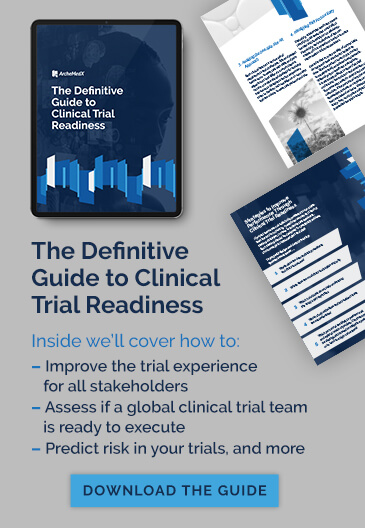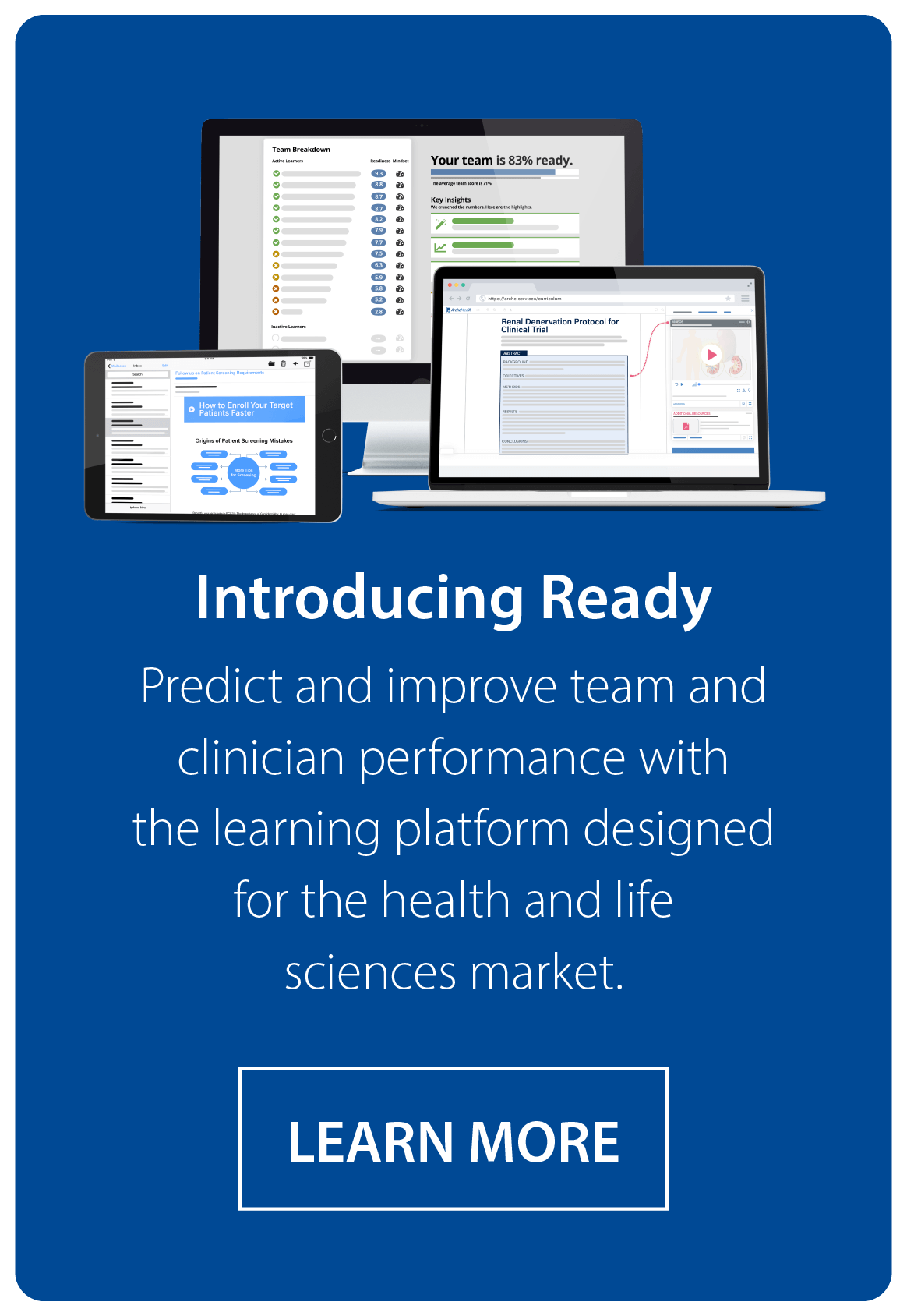There are still a lot of challenges facing pharmaceuticals, med tech, and biotech companies that seek to begin a clinical trial post-COVID. But the obstacles aren’t stopping them. At time of writing, over 500 companies have a Phase II or Phase III clinical trial startup planned in the next 12 months. Clinical research moves on, as it must.
If you’re planning a clinical trial, you already recognize some major differences from past studies. And the emergence of new trial designs like decentralized clinical trials and hybrid trials provide new opportunities – and obstacles of their own.
However, regardless of your clinical trial design, there are three major differences every clinical operations leader needs to expect. Here’s a discussion of each one – along with some ideas of how to tackle them.
First, remember that it’s anything but “business as usual” for your clinical trial sites.
You feel the challenges of the ongoing pandemic, don’t you? Remember that many of the site staff are frontline healthcare workers. Their challenging day jobs are exacerbated by everything you’re feeling.
And you may worry about loading up already stretched site staff. There’s a lot they have to do before they even enroll the first patient: study startup training, initiation, and activation activities.
But with the availability of new digital and remote enabled tools, you can actually use the clinical trial startup to reduce site burden.
Reduce site burden by accommodating their busy schedules.
No, I don’t mean running web meetings every hour on the hour. Instead, think asynchronously. That is – make your protocol and clinical trial content available on-demand, instead of on your schedule.
On-demand start-up activities, such as site training, ease the load of the all-day meeting for site staff. It also accelerates enrollment, because staff can begin preparing to screen patients as soon as your on-demand training is available. No more waiting for schedules to align for a group meeting or visit.
Using more advanced tools (like Ready) to deliver interactive training also enables you to collect valuable data immediately. This data can then inform faster operational decisions (i.e., prioritizing site activation and monitoring coverage) based on real-time insights into site and staff readiness. One of our largest clients, PRA Health Sciences values this quick access to data and actionable insights.
In fact, in equipping their own CRAs, PRA’s leadership uses Ready to deploy more interactive content globally. They can quickly determine which of their CRA team members are ready for a specific trial, and which ones need more preparation. This lets them intervene early to increase the capabilities of their teams where needed. You can do the same with site staff, or even your CRO’s team members.
Reduce site burden by consolidating their clinical study startup resources in a single hub, available anytime.
When you provide site training and activities in an on-demand environment, you get to avoid sending multiple files, portals, or emails stuffed with attachments.
Centralize your study startup content into a single portal, or learning experience. And cut the extraneous noise of extra emails.
Tools like Ready make it so easy for you to build your site training around your existing protocol and essential study documents. Instead of wasting time converting each document into a slide deck, and then trying to deliver individual training sessions for each site, a far more useful exercise is to utilize a platform like Ready to turn that essential document into an on-demand and highly engaging learning experience.
Best of all you can do this in hours, not days and weeks. This saves valuable time (and possibly many hours of billable CRO time), and helps to drive consistency in your content. As we suggested in a recent article, you can re-invest some of the saved time by pulling together complementary resources, or improving your assessments.
And packaging all of your resources into a focused learning experience makes it easy for you to update, enhance, and deploy the same quality of learning to everyone even if they join a site part-way through a trial. Even better, it simplifies the lives of your site staff. It helps them to know where to go for everything related to your protocol, SOPs, and best practices.
Second, the reasons you had for using the same sites for every study startup are not as compelling now.
There’s really no good reason to only stick with “tried and true” sites post-pandemic. In a recent interview with Liz Beatty, the Chief Strategy Officer of Inato, she revealed that 70% of clinical trials are performed by the same 5% of trial sites.
And is there a great reason for that? Despite the belief that tried and true sites should be reliable to enroll and perform, there has been no marked improvement in the performance of clinical trial sites over recent history. In fact, Tufts reported that the clinical period has gotten longer.
It’s an ideal time to disrupt your model for activating sites for two major reasons.
Getting onsite is difficult today, so location isn’t as critical.
While it’s difficult to get onsite today, it is, and has always been, a burden to your sites when you’re there. In the push to reduce site burden, now is the time to reduce your reliance on in-person visits. Without that barrier, your site options expand greatly.
Is it now possible for you to consider sites that may be in regions that offer more diversity? Or perhaps areas with a less experienced but highly motivated investigator who has an available patient population…but hasn’t worked with you before?
The opportunity to expand to new sites and untapped patient populations has never been greater. Plus, over the past two years it has become evident that not only is diversity in your patient demographics needed, but it will be expected. Investors, partners, regulators, and the entire industry are expecting clinical trial leaders to learn and to change how they research treatments across ethnicities, cultures, lifestyles, and ages.
There are ways for you to objectively measure site readiness early in the clinical trial startup.
A site’s experience with you, your CRO, or any past clinical trial doesn’t tell the full story about its ability to perform in your upcoming trial. Site staff change, patient populations shift, sites may be enrolling competing studies. Solutions like Ready can reveal the critical insights you need to know about a site and its staff capabilities as they currently exist.
- Want to see their confidence in enrolling the right patients quickly? Easily done.
- Need to understand staff knowledge around handling and administering your investigational product? A snap.
- Think it’s important to assess a site’s understanding of decision-making on exclusion criteria? Yep, that’s easy, too.
With objective and immediate readiness analysis available across all sites, both new and old, there is no need to guess about which sites can perform. You can have the same level of confidence whether you’ve worked with a site a dozen times, or never before. And – likely slash the risk of missing enrollment targets.
Third, the big in-person investigator meeting is not only off the table, it may be gone for good.
OK, it’s probably not gone for every clinical trial for good. But depending on your specific objectives, you may not need it. And if that’s the case, you’ll greatly reduce your costs and workload. Plus, you’ll avoid the burden of scheduling a lot of very busy people away for hours or even days more than necessary.
One emerging biotech we work with has reimagined the PI meeting completely. This biotech instead chose to use Ready to deploy all of their PI meeting content completely online and completely on-demand. That means, similar to site training, investigators and study coordinators can begin consuming the protocol as soon as it’s deployed by the biotech. And that means the trial team can immediately discover insights about investigator readiness, too.
Just as you adjust your clinical trial startup, your trial team will adjust, too.
Fortunately, we humans are natural innovators, and natural adapters. You’ve already had to make major changes, and your sites, teams, and patients are making changes too, too.
But when you’re not there in-person with your clinical trial resources, it’s easy to lose sight of the opportunities you have to help them adjust to your changes.
Take the ongoing uncertainty in our environment as an opportunity to change. Don’t just do it for your next trial, but establish new and better processes to pave a path for running higher performing trials. For reducing your risk and error. And for embracing a future where you may run a truly decentralized clinical trial, or even a fully virtual trial.
New digital tools and predictive models will make this shift much easier, and can also deliver benefits to the rest of your team. But you must recognize these three challenges, and plan for them. Ready by ArcheMedX can help you improve your clinical trial startup, while you simultaneously improve your site and team performance (and ease their workload, too).






